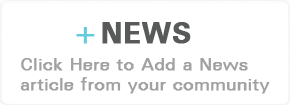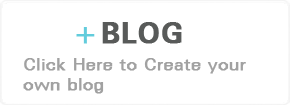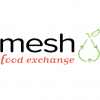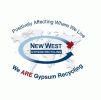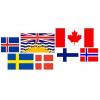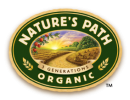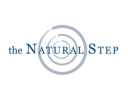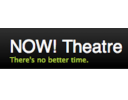Blog Post: Web-based GIS in Felixstowe’s Community Nature Reserve by Dr Adrian Cooper
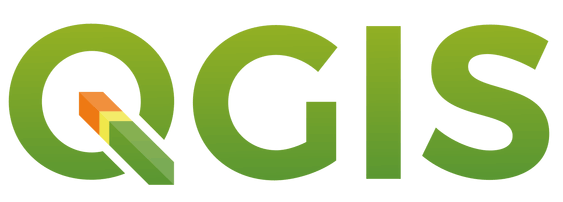
This article explains the background and techniques of using web-based GIS within a Citizen Science Group attached to Felixstowe’s Community Nature Reserve in the UK. It is hoped that this discussion will encourage other community-based conservation groups to use these technologies to help their own development.
Geographical Information Systems (GIS) are computer technologies which can be used to create maps of many different kinds. When those GIS technologies are used to create maps which are published on the world wide web, they are described as being web-based ie web-based GIS.
The aims, background and development of Felixstowe’s Community Nature Reserve have been discussed previously here http://littlegreenspace.org.uk/features/Felixstowe-nature-reserve.html
Using web-based GIS to help community-based conservation
Felixstowe’s Community Nature Reserve was founded in May 2015. In April 2018, a group of our members wanted to engage with the local Felixstowe environment is a more active way. The group decided that they wanted to make their own maps as an exercise in this active environmental engagement. The first set of maps which the group wanted to create focused on reported sightings of hedgehogs in the town of Felixstowe and as far north as the small village of Kirton.
As a community group, we have always tried to achieve everything with as little financial expenditure as possible. That way, other groups, who also want to develop their own community nature reserves, can never feel that there is a need to raise large funding before work begins.
As a consequence of our prudent approach to finances, we chose to build our maps using QGIS software which is freely available to anyone. Details of downloading QGIS are available here: https://www.qgis.org/en/site/
Among our citizen scientists, there was only one person who had previous experience of using QGIS. As a consequence, we met together over several evenings, to discuss the practicalities of how location data can be gathered, and how it can be entered onto a QGIS map. To make sure that everyone was completely comfortable with this map-making process, we spent as much time as was necessary to ensure that no one felt excluded or left behind. Within all those discussions, we used clear simple English instead of any of the computer jargon which can too easily be employed in the use of software. This is a fundamentally important point which other community-based conservation groups really should take seriously. It is all too easy for a small group of ‘experts’ to gallop ahead of other willing volunteers in their understanding and use of map-making software. However, that soon leads to a situation where the majority of non-experts feel alienated and marginalised from the development process. In Felixstowe, when we found that some individuals learned the ideas quickly, we encouraged them to help smaller groups of members who found the ideas harder to understand. As a consequence, everyone felt they had as much support as possible, and that no one among our original group felt left behind.
The next stage was to gather our reported sightings of hedgehogs. We devoted the first ten days of May 2018 to gathering our reported sightings. To invite local people to take part, we arranged for one of our team members to be interviewed on Felixstowe Community Radio to explain what we were doing, and to invite local participation. We also used our Facebook page to invite reported sightings.
By the third week of May 2018, we had received 58 reported sightings. Everyone who provided a reported sighting was also asked to leave their mobile number so that a member of our citizen science group could contact them to verify that a sighting had actually taken place and that (as far as possible) it did not duplicate any other sighting. With 30 members in our citizen science group, the verification of 58 reported sightings was achieved within only a few days.
Developing our web-based maps
As this mapping exercise was our first citizen science project, we decided to proceed with caution. We therefore decided to publish an initial map of sightings only from within central Felixstowe. This is the map shown in the lower part of this web page:
https://felixstowe-s-community-nature-reserve.webnode.com/maps/
One of the great benefits of developing web-based maps is that it can attract a healthy level of debate among those individuals who worked on the map, as well as others who choose simply to comment on its appearance and usefulness.
Within our citizen science group, we published the first version of the central Felixstowe map on 21 May 2018. Almost immediately, we received helpful feedback from other local people. Among their initial observations was that our location dots, showing each reported hedgehog sighting, were not sufficiently clear. So we made those locations more clear until people were happy.
Other people requested a scale and a north arrow – so they were added too.
As a consequence of this debate, there was a series of versions of our map until local people appeared happy with what we had done. Within our citizen science group, we also had further debate, and amendments of the map, until all members were satisfied.
We then published the second map, showing reported hedgehog sightings for the whole of the Felixstowe area as far north as the village of Kirton. Again, we invited comments, and adjusted the map until as many people as possible seemed content that the project satisfied their expectations.
In this way, these two online maps were as interactive as we could make them. That is, comment was invited and received – and amendments were made to the maps to satisfy that feedback.
Moving on from the maps
The two maps of reported hedgehog sightings were successful in at least three ways. First, the map-making activity showed that we could work together to achieve a stated goal – to produce a pair of web-based maps which provoked a healthy level of public debate. Second, it allowed as many people as possible to think about, and comment upon, the practicalities of community-based conservation, collaborative mapping and citizen science. Third, the mapping exercise ignited a further wave of enthusiasm among our citizen science group to engage with further work – that of more data collection and analysis.
The full list of our data analysis is shown here: https://felixstowe-s-community-nature-reserve.webnode.com/data-analysis/
Not surprisingly, the first piece of data analysis arose from our preparation for the hedgehog mapping exercise. Specifically, we created a random sample of 50 of our members and asked them how many days per week they laid out food and water for hedgehogs which visit their gardens. The period we were interested in was between 1 - 7 May 2018. That is, this data analysis was conducted even before our web-based maps were complete. This simply shows the level of enthusiasm which the mapping exercise created. It also shows that ideas were encouraged to be suggested from citizen science group members until they reached completion.
Our next data analysis took place in the week between 21 – 27 May 2018. Specifically, we took a new random sample of 50 local people and asked them how many times they laid out food and water for hedgehogs during that week. We then asked them how many times during that week they saw at least one hedgehog. The correlation was strong (0.9135), suggesting that it really is true that helping local hedgehogs is a good idea if people want to see more hedgehogs. Although this fact is widely quoted, our data analysis challenged it, investigated it rigorously, and demonstrated it in a clear way.
More recently, we have published a growing series of data analysis, all of which is explained and illustrated on our citizen science data analysis web page:
https://felixstowe-s-community-nature-reserve.webnode.com/data-analysis/
The main benefit of this data analysis is it has developed the way our citizen science group engages with our local environment. That is, when one or more of our members has an idea for a new investigation, we discuss it with the aim of trying to make it work. We therefore allow the enthusiasm of grass-roots community-based conservationists to be expressed in professional and appropriate scientific ways.
Sharing is essential
The main feedback which we received from local people regarding this web-based mapping exercise, and the subsequent data analysis, was the request for it to be shared as widely as possible. We therefore secured the support of the Suffolk Biodiversity Information Service to share our maps and data results in their quarterly news letter.
Across the UK, we also share those same web-based maps and data results through our Twitter page with the National Biodiversity Network – the UK’s largest network of conservation groups.
Across Europe, we share our maps and data through the European Citizen Science Association. This way of sharing our maps and data has caused a particularly high level of approval among local people given the current uncertainties of the UK’s position in Europe. Local people in the Felixstowe area therefore show a high level of approval that their citizen science group is cutting through that uncertainty and creating their own links with other, like-minded individuals and groups across Europe. Given the first-class reputation of the European Citizen Science Association, it has been an added bonus to be able to share our maps and data results with academics and other groups from other parts of the world – including the United States and Qatar.
Conclusions
This discussion shows that, with no financial expenditure, web-based maps and data analysis can be produced which help local people to engage with the practicalities of community-based conservation. Each of these maps, and each of the data analysis projects, has provoked a healthy level of local debate which has greatly helped to improve that work. That is, the maps and data analysis have been shown to be interactive through their presence on the web since they have been improved through the process of public comment and debate on earlier versions which were published on our citizen science web page.
In future, this citizen science group will continue to work in this interactive web-based manner. Ideas for more web-based maps and data analysis will be produced from our citizen science group members. First-versions will be published on line. Feedback from local people and others will be used to improve that work, and our approach to citizen science and community-based conservation as a whole.
Category:





